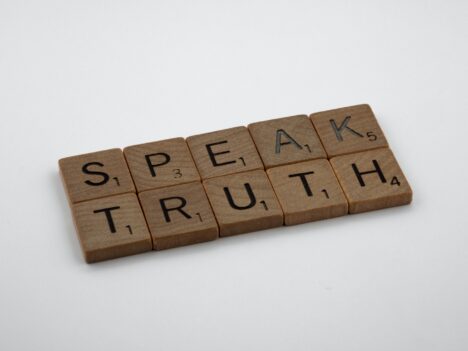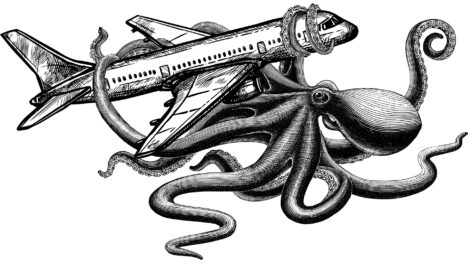
“The camera never lies”. Or does it?
About 160 years ago, a popular yet controversial play called The Octoroon hit the stage in New York and London. Filled with romance, crime and plot twists, it showed the villain attempting to frame someone else for a crime for which he was responsible. He would have succeeded in his treachery but for the invention of a new apparatus: the camera. Caught in the act by its tell-all lens, the villain was convicted due to evidence that was considered irrefutable.
It wasn’t long before photographic evidence had firmly established itself in court cases. In one of the most famous trials of the 1930s, involving the kidnapping of aviation pioneer Charles Lindbergh’s son, the use of photographs by the prosecution was key to the defendant’s conviction. Although manipulation of photos was possible and even occasionally employed in these early years, the level of effort and skill required and the sterile results were not enough to discredit the notion that a camera is generally a reliable witness.

The invention of Adobe Photoshop in 1988 was a game-changer. Using this new technology, anybody could modify a photograph without a massive budget, specialised skills or weeks of effort. Suddenly an old adage came into question, as it quickly became obvious that a photograph could lie all too easily.
However, up until recently, most people felt fairly safe trusting video footage. Although video manipulation technology had been steadily developing during the 20th century, only big budget film visual effects companies could painstakingly create illusions that were realistic and believable. For the most part, these effects were confined to the realm of Hollywood
Enter deepfakes, also known as “synthetic media”. This new approach to doctoring footage enables deep learning algorithms to face swap the face of an actor with the face of someone being impersonated. Footage is shot of the actor doing or saying whatever the creator would like to communicate, and then the other person’s face and mannerisms are superimposed over this footage. This face-swapping is enabled by what is known as a generative adversarial network (or gan) which manipulates the footage of the actor to match with the appearance and mannerisms of the person being faked. It then compares these generated images against a data of the real thing – iterating until the result is almost identical. More powerful than older forms of machine learning, these neural networks can produce a deepfaked video which is essentially indistinguishable from a genuine one in a matter of hours.
Voice-sampling technology is a similar issue which allows recorded audio to be learned and then mimicked. Last year, in TEDx Toronto talk, Joseph Palermo explained that an editor can type any desired text and have a computer play it back realistically in the tones and inflections of the person being mimicked.
Combining both audio and video fakes, political leaders, celebrities and even you can be mimicked to such a realistic degree that even close family and friends would be fooled. In fact, holograms of individuals can now be created with artificial intelligence (AI) and AI algorithms, based upon the actual mannerisms and also the beliefs (either real or imagined) of a person so that we can have eerily authentic “interactive” conversations with them. Hypothetically, a modern-day interview with Napoleon about the battle of Waterloo is impossible because he passed away 200 years ago, but modern technology could make talking in real-time to his AI hologram possible. These interactions can even take place in other languages originally unknown to the person being faked.
The possibilities are exciting, but also terrifying. Imagine receiving a telephone call from someone who sounds exactly like your spouse, best friend or family member. She explains that she has been in an emergency and requires financial assistance. Or imagine a well-known politician like Donald Trump and Barack Obama (both of whom have previously had deep fakes imitating them circulate online) appearing in a video news conference, complete with live question-and-answer session, putting forward an agenda which could create significant national or international upheaval. Now what if this fake news conference was shared thousands, or even millions, of times on social media platforms before anybody could debunk it.
It’s easy to see the potential for the technology behind deepfake videos to be used in scams, or to spread misinformation or disinformation. Even more concerning is the fact that some deepfake software is open-source, meaning that it is increasingly accessible to members of the general public. What was once confined to Hollywood may very soon be available for your everyday Reddit user or Russian bot. While some digital startups like the Dutch company Deeptrace are dedicated to fighting this problem, solutions remain in short supply. Wikipedia contributors lament, “The primary pitfall is that humanity could fall into an age in which it can no longer be determined whether a medium’s content corresponds to the truth.”
What’s at stake?
Being unable to detect a fake is unnerving. The current difficulty cybersecurity has with accurate deepfake detection is a potentially concerning portend of future troubles. How will we ever be able to tell what is true anymore? How can we protect ourselves from misuse of this technology? Does deception at this level merely threaten our personal or national interests, or could our situation be even more precarious?
When Israel was in ruins around 500 BC, Sun Tzu—a respected Chinese military strategist—is credited with writing what is widely considered the most authoritative and informative manual on military conflict, entitled The Art of War. This volume is required reading for military intelligence officers even today. A single sentence encapsulates its thirteen chapters: “War is the way of deception.”
The Bible describes just that: a war whose way is deception. From Genesis to Revelation, it’s easy to see deception as a theme in which the forces of good battle the forces of evil. Satan, in the form of a serpent, deceived Eve into rejecting God’s authority, resulting in death and misery for all humanity (Genesis 3). Daniel warned of a coming usurper who would attempt to take God’s place while hurting His people (Daniel 7,8). Jesus Himself warned His disciples, “Beware that you are not deceived” and “beware of false prophets” who “will perform signs and wonders to deceive if possible, even the elect” (Matthew 24:4-27). Revelation, the final book of the Bible, describes Satan as “the deceiver of the whole world” (Revelation 12:9).
One of the early apostles, Paul, had much to say about forces who would deceive humanity. In one of his letters, Paul warned his readers about the “man of lawlessness”. This being would:
- Oppose God and attempt to usurp His authority (2 Thessalonians 2:4).
- Be at work in the time of Paul, but intensify his efforts later (2 Thessalonians 2:5-7).
- Be revealed and overthrown at the second coming of Jesus (2 Thessalonians 2:8).
- Perform false signs and wonders (2 Thessalonians 2:9).
- Be inspired by Satan and deceive many, causing them to perish (2 Thessalonians 2:9,10).
Paul suggests that the “man of lawlessness” and those on his side are actually trying to deceive humanity to believe a lie and therefore be confused and even condemned. That’s pretty scary stuff! And evidently pretty serious too, for in another passage, Paul laments, “And no wonder, for Satan himself masquerades as an angel of light” (2 Corinthians 11:13-15). Clearly, deception has a long history with big implications.
Whatever our differing worldviews, the emergence of convincing deepfakes force us to take a hard look at the importance of truth and the risks of deception. Is it possible that deepfake technology is more than just a laugh or an opportunity for blackmail and extortion at an individual level? Could it be part of a larger landscape in which the forces of evil are actively waging war on God and the inhabitants of earth, trying to confuse us, manipulate our global politics and perhaps even impact our eternal destiny? In this age when we can no longer trust our eyes and ears, what can we rely on?

The good news
Paul ends his passage about the man of lawlessness with the promise that his readers are chosen by God, and with encouragement to “stand firm and hold fast” (2 Thessalonians 2:15). Today, Paul’s writings offer hope that even the most hardened of us can take courage from. If Paul’s own life is anything to go by: “Here is a trustworthy saying that deserves full acceptance: Christ Jesus came into the world to save sinners—of whom I am the worst” (1 Timothy 1:15). That’s the good news: the evil one may try to deceive us, but Jesus is able to save us from his grasp when we put our trust in Him. Paul’s friend James put it this way: “So, my very dear friends, don’t get thrown off course. Every desirable and beneficial gift comes out of heaven. The gifts are rivers of light cascading down from the Father of Light. There is nothing deceitful in God, nothing two-faced, nothing fickle” (James 1:17, The Message).
The camera may lie, but God has always been—and will always be—trustworthy.
A qualified pilot and keen student of philosophy, theology and science, Nathan Tasker lives with his family in Maryborough, Queensland.









